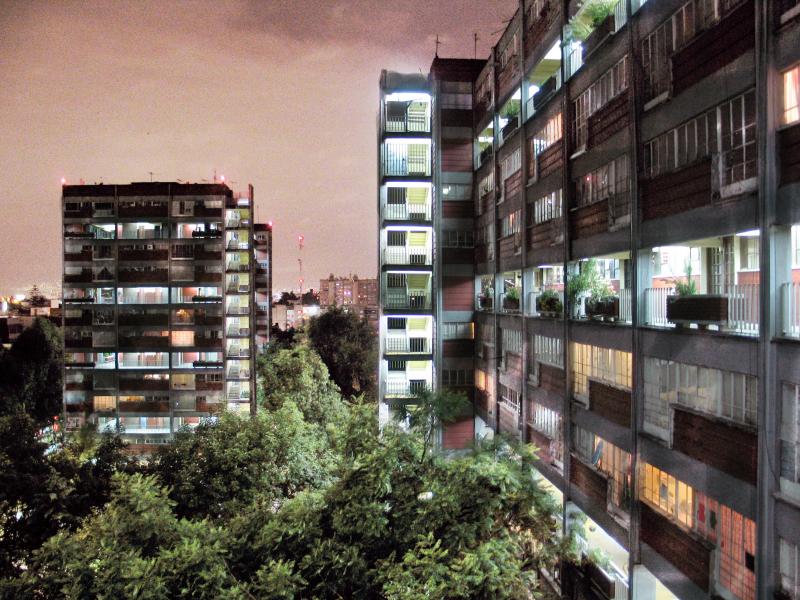
The Multifamiliar Presidente Alemán is one Mexico City’s earliest and most famous mass housing projects. Even today, people hardly realize that these giant housing blocks went up between 1947 and 1949! It’s also referred to as the Centro Urbano Presidente Alemán, and thus CUPA, for short.
Built by what was then called the General Directorate of Civil Pensions, the giant project took up some 40,000 square meters at a cost of some 20 million pesos. And worldwide, far less successful public housing projects would live and die while the Presidente Alemán is still not just beloved, but standing tall.
Architect Mario Pani was chosen for the project early on. He worked in collaboration with architect Salvador Ortega and engineer Bernardo Quintana. Pani worked with the functionalist paradigmatic model Le Corbusier was using in the Unité d’Habitation in Marseilles, France almost at the same time. Pani added internal circulation models for adequate ventilation of kitchens and bathrooms. But the initial project called for 800 houses on a single 40,000 square meter lot. Pani and Ortega designed nine 13-story buildings and six three-story buildings. Of the nine tall buildings, seven are joined in a zigzag, following one of the diagonals of the lot. The remaining two tall building are parallel to each of the last buildings that make up the zigzag.
The total ended up being 1,080 separate apartment units. But these many buildings still occupy only about 20% of the lot. There’s almost no question that today the Multifamiliar Presidente Alemán is today of interest because it is, after all, a successful complex. There is nostalgia in the red siding and in many of the details. They’re reminders that the 1940s were a long time ago. But more than the Brutalism critics cynically delight in pointing out, the CUPA was visionary, even for a vision that hasn’t quite come to be.
The complex is immediately south of the Metro Hospital 20 de Noviembre, and the hospital for which the Metro station is named. The wildly interesting and modernist Church of the Divine Providence is just across the street from the southwest corner of the complex.